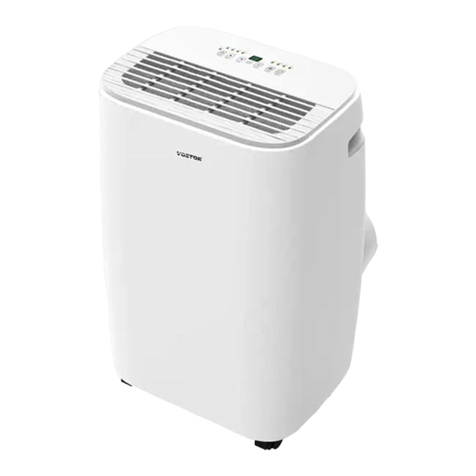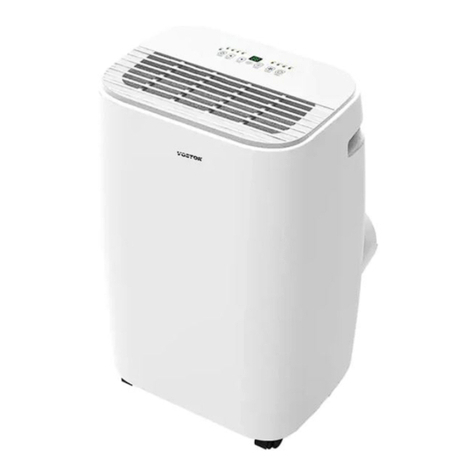
4
General Safety Instructions
• This appliance is for indoor use only.
• Do not use the unit on a socket under repairs or not installed properly.
• Do not use the unit:
o Near a source of fire.
o In an area where oil is likely to splash.
o In an area exposed to direct sunlight.
o In an area where water is likely to splash.
o Near a bath, a laundry, a shower or a swimming pool.
• Never insert your fingers or other objects into the ventilation openings. Ensure children
are explicitly warned to not do this.
• Ensure that the appliance is positioned upright (vertically) during both transport and
storage so that the compressor is correctly positioned.
• Always turn off the appliance before cleaning and unplug it from the wall outlet.
• Switch off the appliance before moving it and unplug it from the wall outlet. Move the
appliance slowly and carefully.
• To a v o i d t h e r i s k o f f i re , d o n o t cover the appliance.
• Do not overload the power outlet by operating the appliance simultaneously with too
many powerful electrical appliances.
• All fan connections must comply with local electrical safety regulations. If necessary,
refer to these regulations.
• If the power cord or plug is damaged, it must be replaced by the manufacturer, an
authorised specialist company or a similarly qualified person.
• Children over the age of 8 and persons with reduced physical, sensory or mental
capabilities or those with a lack of experience and knowledge may only use the
appliance if they are instructed on how to do so by a person responsible for their safety
or if they are supervised and understand the hazards associated with the use of the
appliance. Children may not clean or carry out user maintenance without supervision.
Supervise children so that they do not play with the unit.
• Never drink condensation water that leaks from the appliance.
• The appliance must be installed in accordance with national wiring regulations.
• Do not pull the power cord, deform or modify it or immerse it in water. Incorrect handling
of the power cord may result in damage to the equipment and/or electric shock.
• National gas regulations must be observed. If gas leakage should happen, open the
window for ventilation before running the appliance.
• Do not block the ventilation openings.
• Do not operate the appliance solely by inserting or removing the power plug, as this
may result in electric shock or fire due to heat.





























